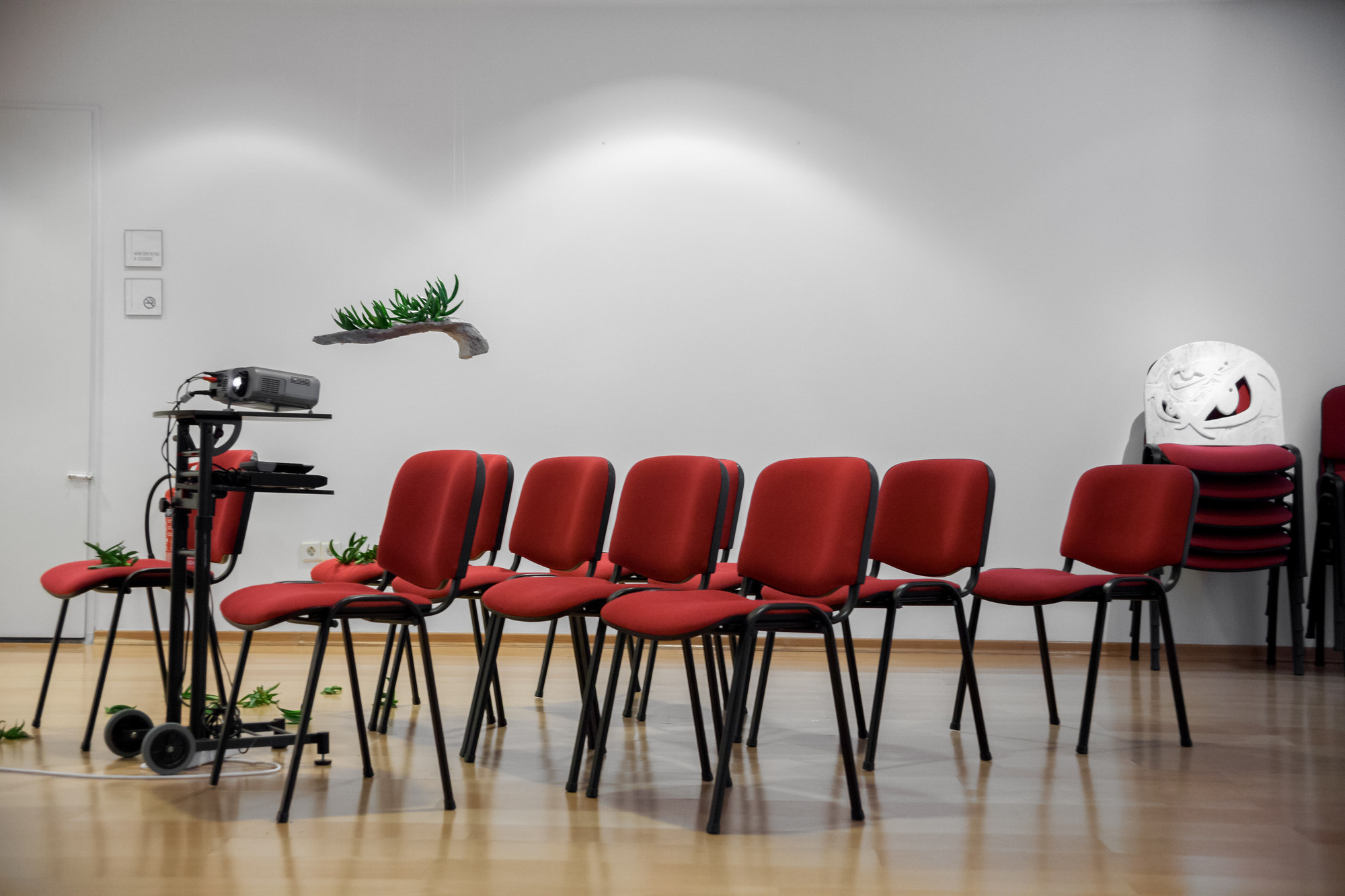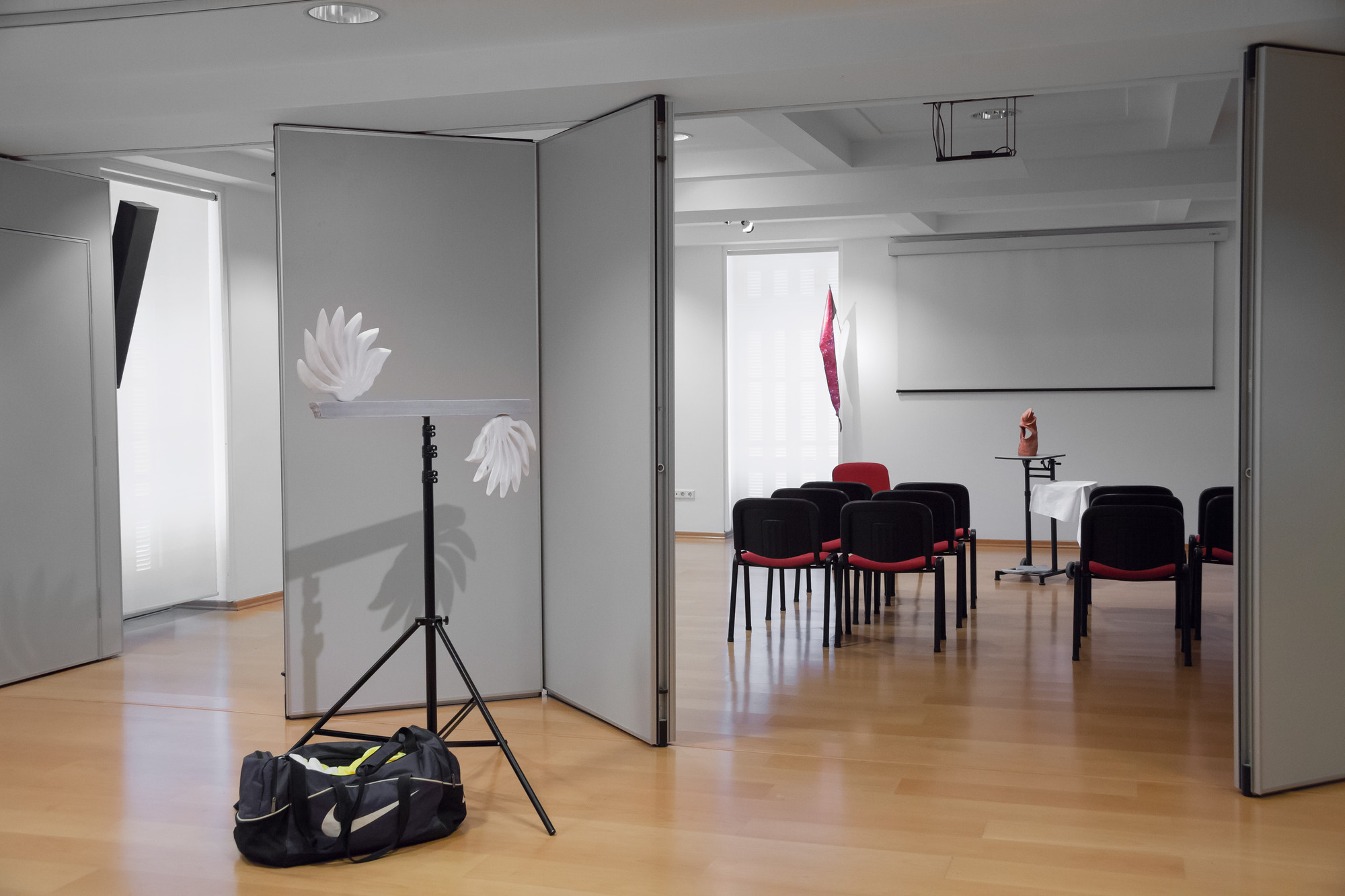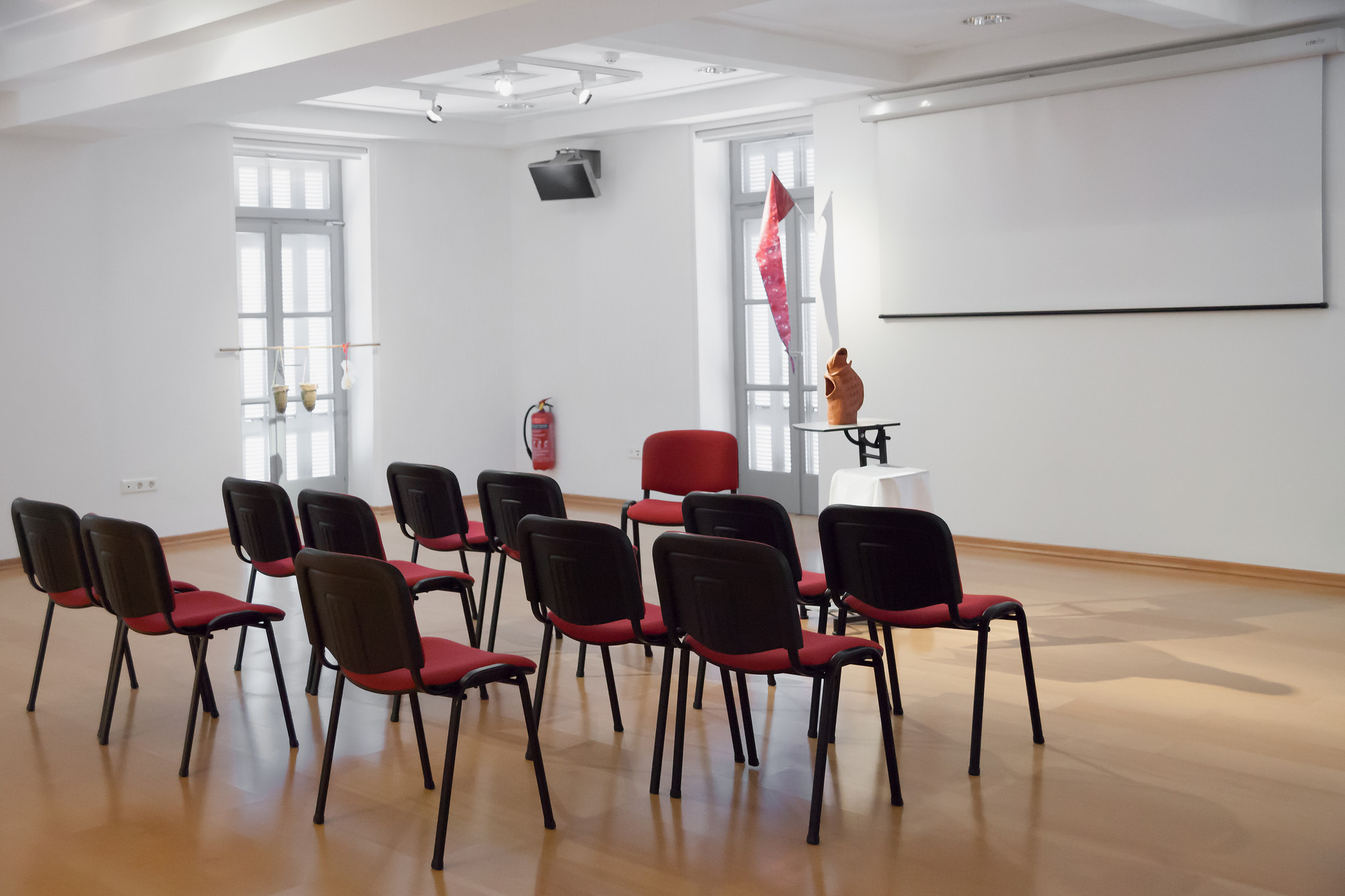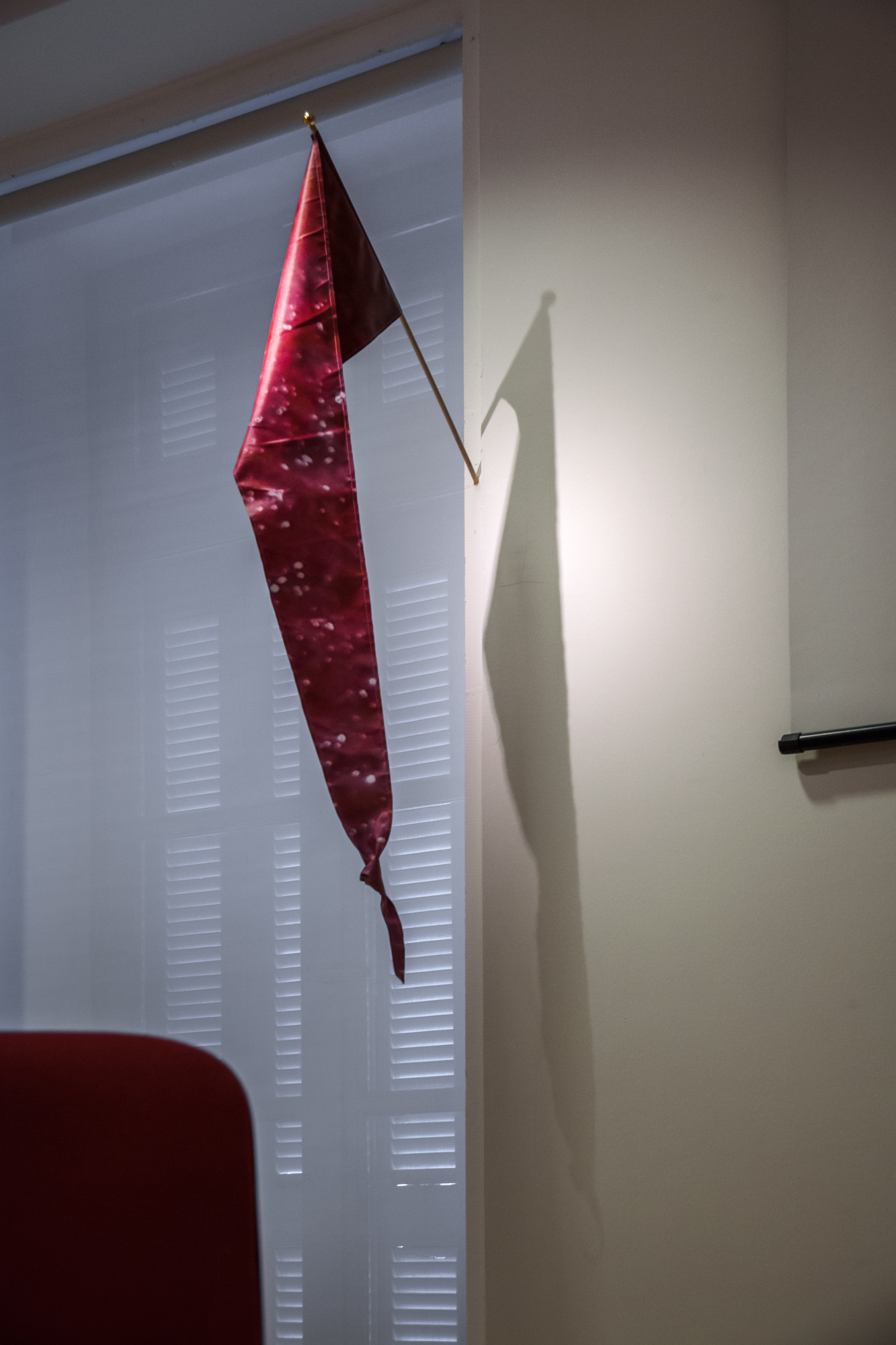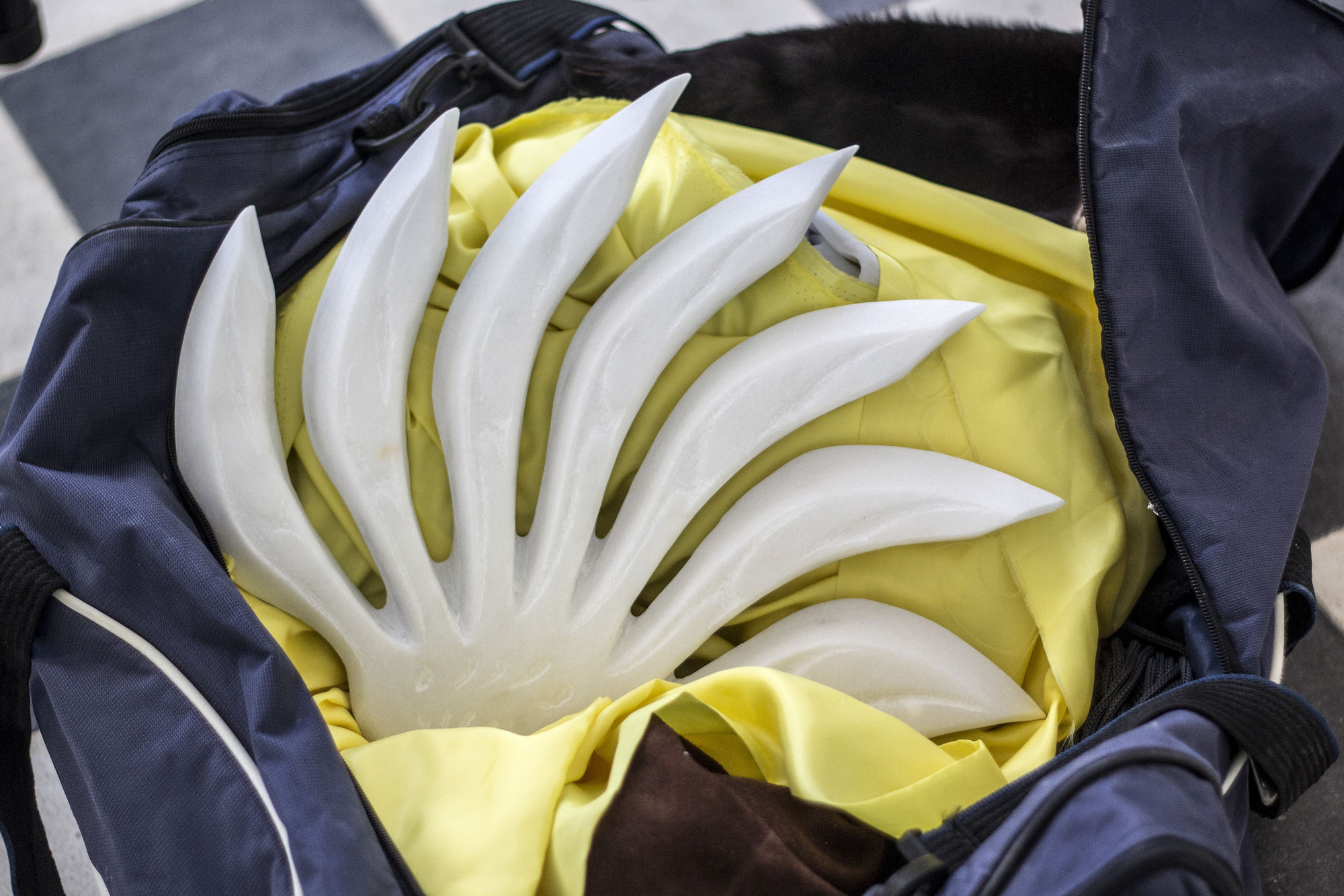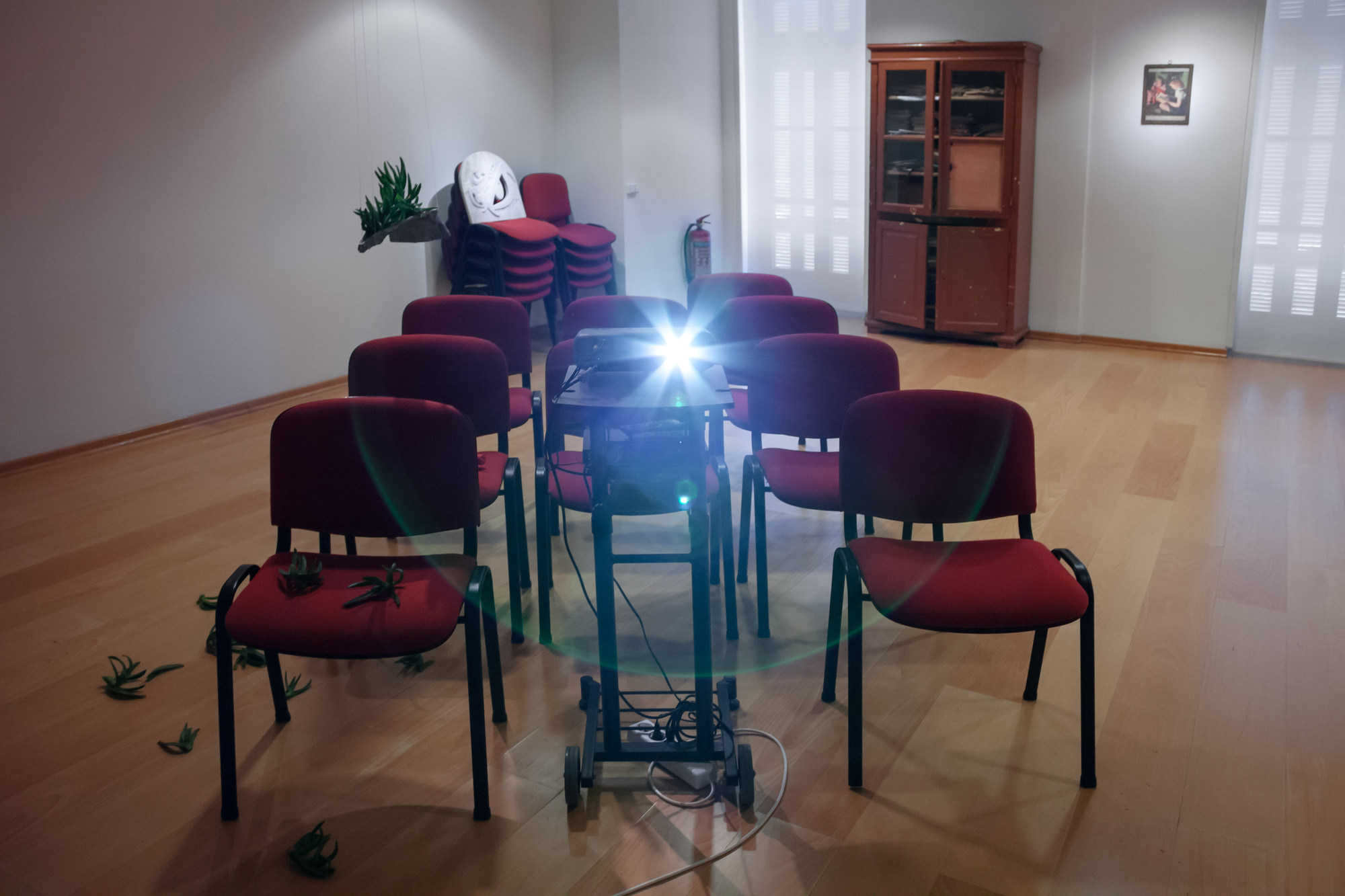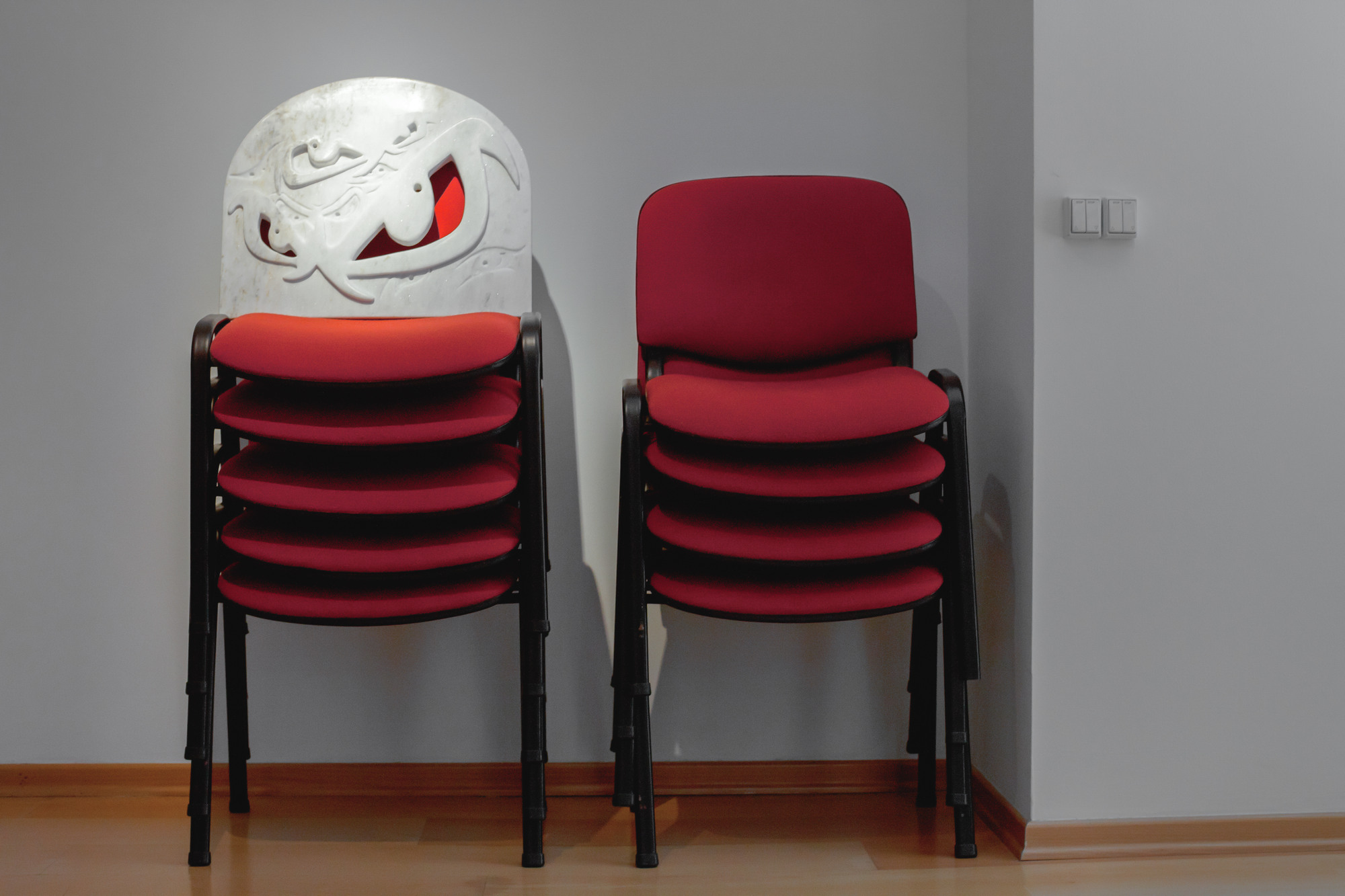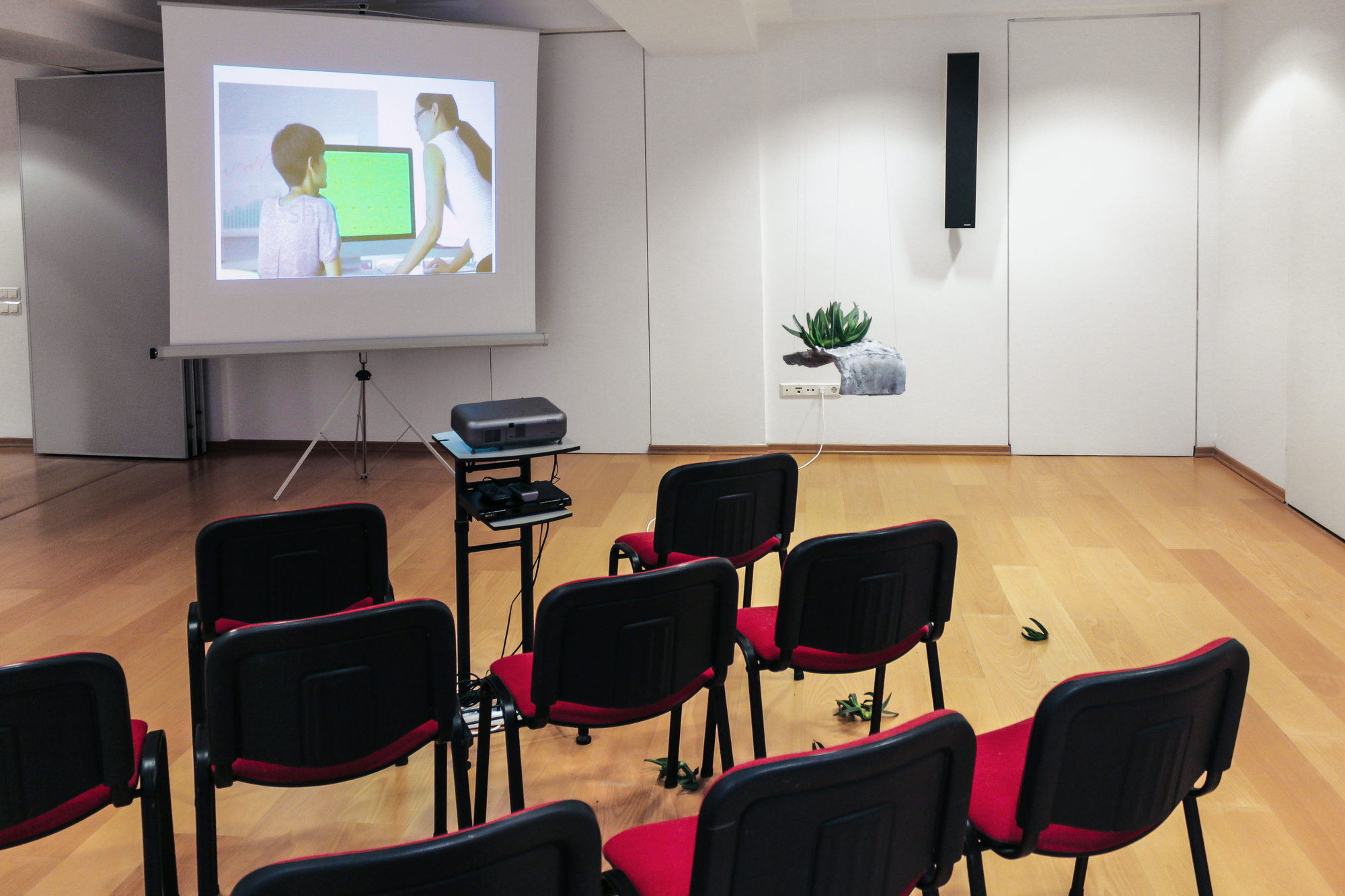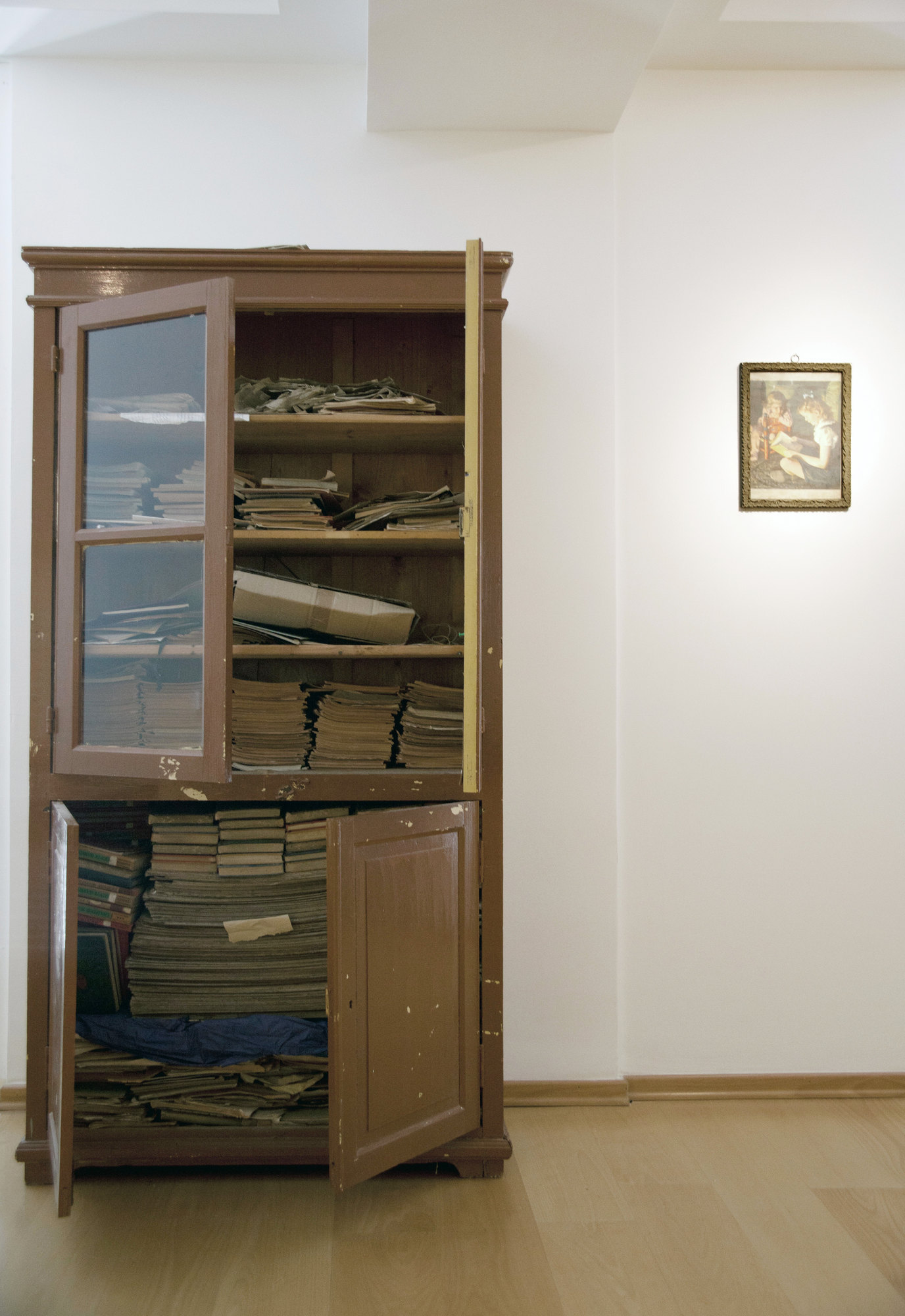Artists: Lorenzo Cirrincione, Dorota Gaweda, Pakui Hardware, Eglė Kulbokaitė, Mikko Kuorinki, Carl Palm, Jennifer Teets
Exhibition title: Time Flies Like an Arrow, Fruit Flies Like a Banana
Curated by: Valentinas Klimašauskas
Organized by: Tinos Quarry Platform residency program and Cultural Foundation of Tinos
Venue: Cultural Foundation of Tinos, Tinos, Cyclades, Greece
Date: July 27 – October 31, 2015
Photography: Natasha Papadopoulou, images copyright and courtesy of the artists and Cultural Foundation of Tinos
Note: Exhibition booklet can be found here
Negotiations (on climate change, the Greek debt, Mediterranean migrant crisis, you name it) are running out of time. Time was once measured by running water, sand, and, besides flying like an arrow, it was running like a river; possibly, as a river of sand. Your tablet’s touchscreen, the one that shows, but also waists our time, may be produced from the same sand.
After he became blind, the Argentinean writer Jorge Luis Borges visited the pyramids in Cairo. There he scooped up a handful of sand and sifted it through his fingers. When asked what he was doing he replied, “I am rearranging the Sahara.” Like the internet or any other vast amount of information or material, the desert and the ocean have no beginning or end, and may be called hyperobjects as coined by Timothy Morton. Hyperobjects are so massivel distributed in time and space that they transcend spatiotemporal specificity, such as global warming, Styrofoam, or radioactive plutonium. Living with, between, or even inside the aforementioned hyperobjects — like how plankton lives in the ocean, or how sand runs in the desert and in one’s palm, we also rearrange the real and metaphorical Sahara and oceans, don’t we?
If you prefer, another example comes to mind the weather. In physics and other sciences, a nonlinear system is a system where the output is not directly proportional to the input. In a similar manner, the exhibition was curated by non-linear dynamics: algae, yeast, calendar, the moon, Venus and Jupiter, making a perfect triangle in the sky just before the opening, showering in marble quarries, a referendum, goat’s mating season, the wind, and many more objects and factors to come.
“To ask a human being to account for time is not very different from asking a floating fragment of plankton to account for the ocean. How does the plankton bank the ocean?‘™”asks Raqs Media Collective while being concerned about the qualities of time but also making an eco-poetical connection between plankton and humans. They continue:
What is time?
What is the time?
The time is of your choosing.
The time is not of your choosing.
The time is out of joint.
The time has come.
The time needs changing.
The time has gone.
The time has come and gone.
The time has flown.
The time is not convenient.
The time is at hand.
The time has been spent well.
The time has been wasted.
The time is awkward.
The time is ripe.
The time has passed so swiftly.
The time is now.
What is the time?
Looking from the perspective of the New York Stock Exchange, which is trading and crashing in nanoseconds, a month spent on a Cycladic Island, Tinos, may be compared to a significantly longer period than a month somewhere else. Similarly, from the perspective of a fragment of plankton, a month for the artists on Tinos Island might disappear as soon (or as long) as a nanosecond on Wall Street.
The residency and exhibition does not ask the artists or the audience to be accounted for the time spent, but seeks to create artistic and poetic links between the organic and the non-organic, a part and the whole (as in plankton and the ocean), and constructs distinct perspectives to look at ourselves, not to mention the time and space from the point of view of an ophidian, a voting ballot from the last referendum, or an immortal jellyfish Turritopsis dohrnii, just to cite another example.
Pakui Hardware, Mei Piech Chi, 2015
Mikko Kuorinki, Objects described with words to a marble carver, a potter and a weaver, 2015
Mikko Kuorinki, Objects described with words to a marble carver, a potter and a weaver, 2015
Mikko Kuorinki, Objects described with words to a marble carver, a potter and a weaver, 2015
Pakui Hardware, Toop Toop Toop.ppt, 2015
Pakui Hardware, Toop Toop Toop.ppt, 2015
Dorota Gaweda, Turritopsis dohrnii, 2015
Jennifer Teets, The contingency of cheese (Tinos), 2015
Jennifer Teets, The contingency of cheese (Tinos), 2015
Jennifer Teets, The contingency of cheese (Tinos), 2015
Carl Palm, I CAN‘T SEE WHY NOT SAID THE SNOWBLIND SHISHA CHAIN-CHOKING SEASHELL SHELLY SCHUMACHER & CHILLELY SHIVERED HER SHOESHINED SCHOTTISCH SHOULDERS SHABBYCHICLY IN A CHILLAXED SHANGHAIAN CHIMICHURI SHELTER, 2015
Lorenzo Cirrincione, Heures sans soleil, 2015
Pakui Hardware, Mei Piech Chi, 2015
Pakui Hardware, Mei Piech Chi, 2015
Pakui Hardware, Mei Piech Chi, 2015
Eglė Kulbokaitė, Hypersea I // To escape the banal-terrestrial like angels, 2015
Dorota Gaweda, Turritopsis dohrnii, 2015
Dorota Gaweda, Ophidians, 2015
Dorota Gaweda, Ophidians, 2015
Lorenzo Cirrincione, Heures sans soleil, 2015
Lorenzo Cirrincione, Heures sans soleil, 2015


